Transient Testing
For those of you that are curious as to some of the reasoning and equipment behind our PSU testing program here at TheFPSReview, we have put together an introduction for you that shares a lot of the behind the scenes of the program. This program is based on what the author developed at [H]ardOCP and utilizes the equipment bequeathed to the author by Kyle Bennett. The testing we are conducting today is exactly as described in that document and will continue with our Transient Testing.
Transient Test 1
Loaded/Unloaded

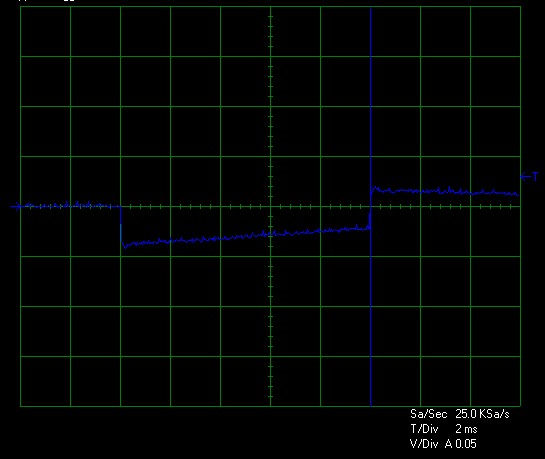
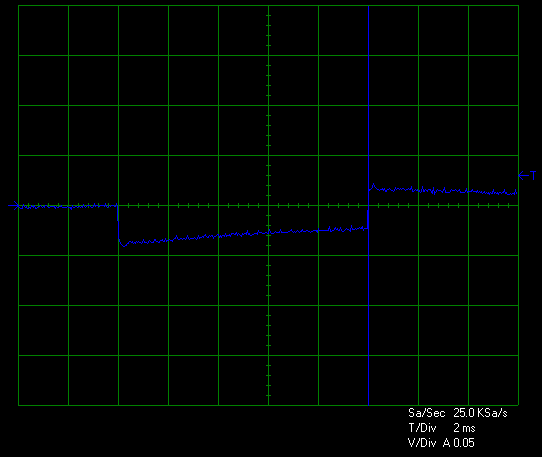
12v/5v
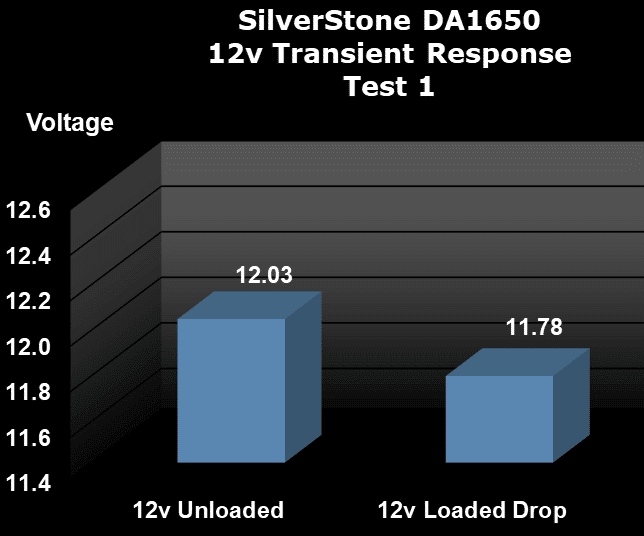
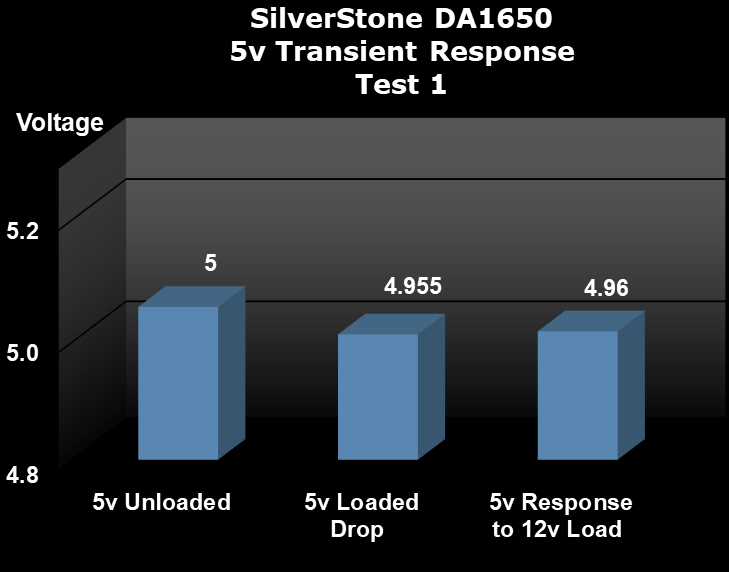
Test #1 is equal to approximately 25% of the rated capacity of the SilverStone DA1650 at 45c. This makes Test #1 equal to 412W by loading the 12v rail to 32a, the 5v rail to 2a, the 3.3v rail to 1a, the +5vsb to 2a, and the -12v to 0.3a before the addition of the transient load. The results of Test #1 show a ~250mV drop on the 12v rail and ~45mV drop on the 5v rail when each is directly loaded. At the same time that the load was being triggered on the 12v rail, the 5v rail measured a ~40mV drop.
Transient Test 2
Loaded/Unloaded


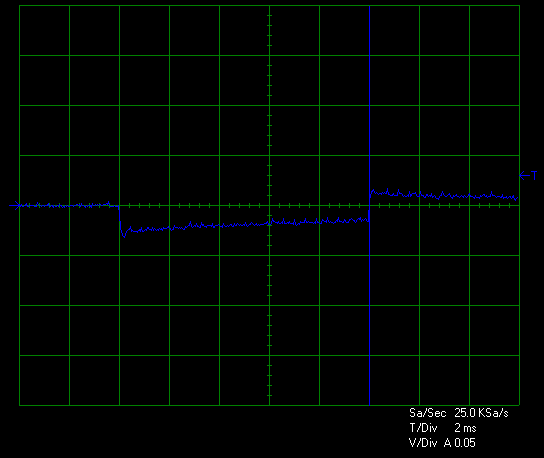
12v/5v
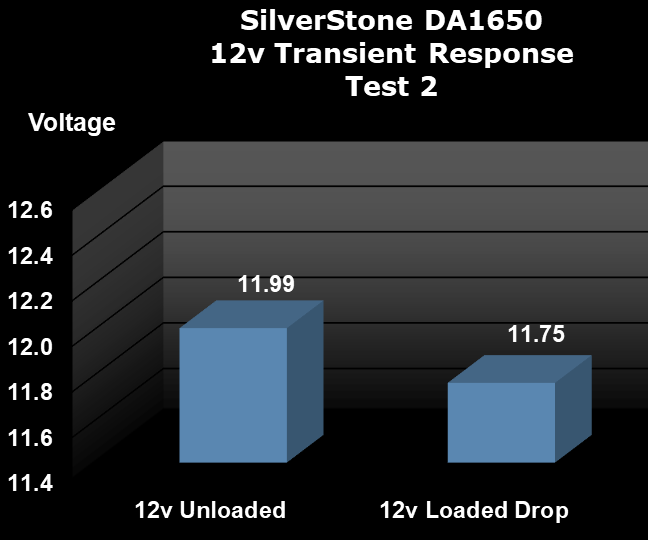
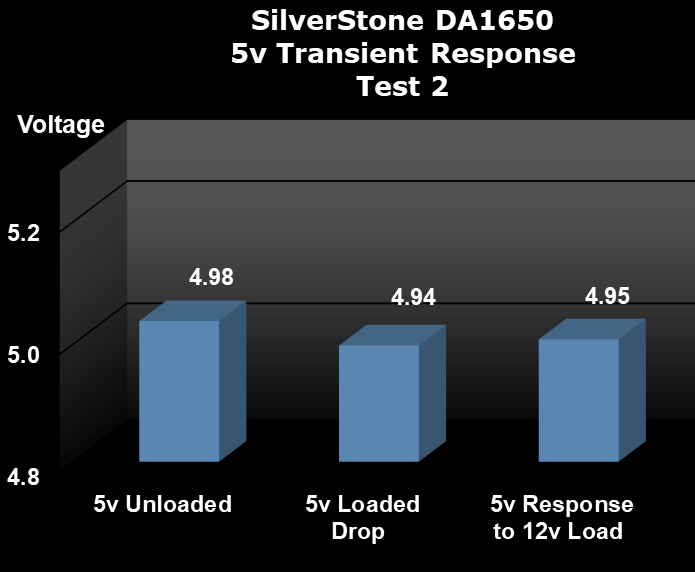
Test #2 is equal to approximately 50% of the rated capacity of the SilverStone DA1650 at 45c. This makes Test #2 equal to 829W by loading the 12v rail to 65a, the 5v rail to 5a, the 3.3v rail to 3a, the +5vsb to 2a, and the -12v to 0.3a before the addition of the transient load. The results of Test #2 show a ~240mV drop on the 12v rail and ~40mV drop on the 5v rail when each is directly loaded. At the same time that the load was being triggered on the 12v rail, the 5v rail measured a ~30mV drop.
Transient Load Testing Summary
The Transient Load Tests results for the SilverStone DA1650 are passing and very good. In today’s testing, the DA1650 saw the loaded 12v rail post a peak change of ~250mV, and the loaded 5v rail post a peak change of ~45mV. The unloaded 5v peak change during the 12v load was ~40mV. Those numbers are, in an absolute sense, very good across the board. In a relative sense, we do not have any other units to compare this unit to. However, it is a 1650W unit, so the loads used here are a small fraction of this unit’s capacity. So, good results are expected, and these are good, but they could be a bit better all things considered. By all things, I mean there are 1650 things here! Let’s move on now to see how this unit does in the DC Output Quality aspect of our testing!
